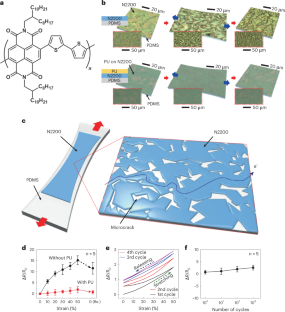2023-07-24 バージニア工科大学(VirginiaTech)
 VTTI conducted the first large-scale naturalistic driving study of electric scooter riders. Photo by Jacob Levin for Virginia Tech.
VTTI conducted the first large-scale naturalistic driving study of electric scooter riders. Photo by Jacob Levin for Virginia Tech.
◆特に、異なる路面への移行が最もリスキーであり、これらのライダーは通常の道路使用に比べて事故の発生率が60倍高かったです。自動車との衝突はなく、他の道路利用者との衝突は避けることが可能でした。VTTIはeスクーターやトラックなど、さまざまな車両に使用されているデータ収集システムを提供しており、今後も安全性向上に向けた研究を続けるとともに、ライダーに対してはインフラ、行動、環境要因によるリスクを啓発する教育プログラムの参加を推奨しています。
<関連情報>
- https://news.vt.edu/articles/2023/07/vtti-research-escooter-results.html
- https://www.sciencedirect.com/science/article/abs/pii/S0022437523000178?via%3Dihub
Eスクーターの衝突事故にはどのような要因があるのか: 自然主義的ライディング・アプローチを用いた最初の考察 What factors contribute to e-scooter crashes: A first look using a naturalistic riding approach
Elizabeth White, Feng Guo, Shu Han, Mike Mollenhauer, Andrea Broaddus, Ted Sweeney, Sarah Robinson, Adam Novotny, Ralph Buehler
Journal of Safety Research Available online :10 February 2023
DOI:https://doi.org/10.1016/j.jsr.2023.02.002
Abstract
Introduction: Shared dockless electric scooters (e-scooters) are a popular shared mobility service providing an accessible last-mile transportation option in urban and campus environments. However, city and campus stakeholders may hesitate to introduce these scooters due to safety concerns. While prior e-scooter safety studies have collected injury data from hospitals or riding data under controlled or naturalistic conditions, these datasets are limited and did not identify risk factors associated with e-scooter riding safety. To address this gap in e-scooter safety research, this study collected the largest naturalistic e-scooter dataset to date and quantified the safety risks associated with behavioral, infrastructure, and environmental factors. Method: A fleet of 200 e-scooters was deployed on Virginia Tech’s campus in Blacksburg, VA for a 6-month period. Fifty were equipped with a unique onboard data acquisition system, using sensors and video to capture e-scooter trips in their entirety. The resulting dataset consisted of 3,500 hours of data spanning over 8,500 trips. Algorithms were developed to identify safety critical events (SCEs) in the dataset and analyses were conducted to determine the prevalence of various SCE risk factors and associated odds ratios. Results: Results from this study indicate that infrastructure-related factors, behavior of e-scooter riders and other actors, and environmental factors all contributed to the SCE risk for e-scooter riders in Virginia Tech’s pedestrian-dense campus environment. Conclusions: To help mitigate unsafe rider behavior, educational outreach programs should quantify the significant risks associated with infrastructure, behavioral, and environmental risk factors and provide clear recommendations to riders. Improved infrastructure maintenance and design may also improve safety for e-scooter riders. Practical Applications: The infrastructure, behavioral, and environmental risk factors quantified in this study can be applied by e-scooter service providers, municipalities, and campus administrators to develop mitigation strategies to reduce the safety risks associated with e-scooter deployments in the future.



